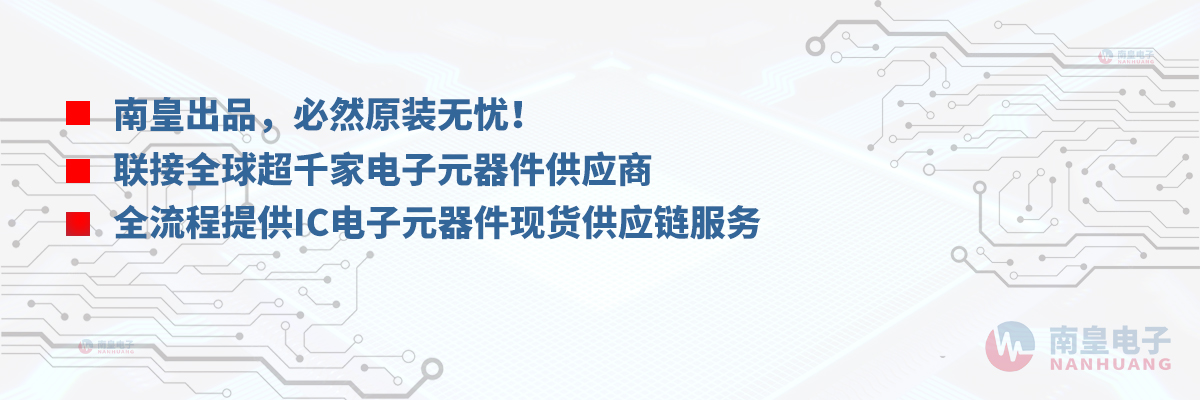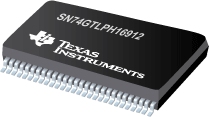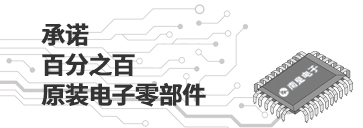

SN74GTLPH16912是TI公司的一款无产品,SN74GTLPH16912是18 位 LVTTL 到 GTLP 通用总线收发器,本页介绍了SN74GTLPH16912的产品说明、应用、特性等,并给出了与SN74GTLPH16912相关的TI元器件型号供参考。
SN74GTLPH16912 - 18 位 LVTTL 到 GTLP 通用总线收发器 - 无 - 背板逻辑器件(GTL/TTL/BTL/ECL收发器/转换器) - TI公司(Texas Instruments,德州仪器)
The SN74GTLPH16912 is a medium-drive, 18-bit UBT™ transceiver that provides LVTTL-to-GTLP and GTLP-to-LVTTL signal-level translation. It allows for transparent, latched, clocked, and clock-enabled modes of data transfer. The device provides a high-speed interface between cards operating at LVTTL logic levels and a backplane operating at GTLP signal levels. High-speed (about three times faster than standard TTL or LVTTL) backplane operation is a direct result of GTLP's reduced output swing (<1 V), reduced input threshold levels, improved differential input, OEC™ circuitry, and TI-OPC™ circuitry. Improved GTLP OEC and TI-OPC circuits minimize bus-settling time and have been designed and tested using several backplane models. The medium drive allows incident-wave switching in heavily loaded backplanes with equivalent load impedance down to 19 .
GTLP is the Texas Instruments (TI™) derivative of the Gunning Transceiver Logic (GTL) JEDEC standard JESD 8-3. The ac specification of the SN74GTLPH16912 is given only at the preferred higher noise-margin GTLP, but the user has the flexibility of using this device at either GTL (VTT = 1.2 V and VREF = 0.8 V) or GTLP (VTT = 1.5 V and VREF = 1 V) signal levels.
Normally, the B port operates at GTLP signal levels. The A-port and control inputs operate at LVTTL logic levels, but are 5-V tolerant and are compatible with TTL and 5-V CMOS inputs. VREF is the B-port differential input reference voltage.
This device is fully specified for live-insertion applications using Ioff, power-up 3-state, and BIAS VCC. The Ioff circuitry disables the outputs, preventing damaging current backflow through the device when it is powered down. The power-up 3-state circuitry places the outputs in the high-impedance state during power up and power down, which prevents driver conflict. The BIAS VCC circuitry precharges and preconditions the B-port input/output connections, preventing disturbance of active data on the backplane during card insertion or removal, and permits true live-insertion capability.
This GTLP device features TI-OPC circuitry, which actively limits overshoot caused by improperly terminated backplanes, unevenly distributed cards, or empty slots during low-to-high signal transitions. This improves signal integrity, which allows adequate noise margin to be maintained at higher frequencies.
Active bus-hold circuitry holds unused or undriven LVTTL data inputs at a valid logic state. Use of pullup or pulldown resistors with the bus-hold circuitry is not recommended.
When VCC is between 0 and 1.5 V, the device is in the high-impedance state during power up or power down. However, to ensure the high-impedance state above 1.5 V, the output-enable (OE\) input should be tied to VCC through a pullup resistor; the minimum value of the resistor is determined by the current-sinking capability of the driver.
- Member of Texas Instruments' Widebus™ Family
- UBT™ Latches and D-Type Flip-Flops for Operation in Transparent, Latched, Clocked, and Clock-Enabled Modes
- TI-OPC™ Circuitry Limits Ringing on Unevenly Loaded Backplanes
- OEC™ Circuitry Improves Signal Integrity and Reduces Electromagnetic Interference
- Bidirectional Interface Between GTLP Signal Levels and LVTTL Logic Levels
- LVTTL Interfaces Are 5-V Tolerant
- Medium-Drive GTLP Outputs (50 mA)
- LVTTL Outputs (\x9624 mA/24 mA)
- GTLP Rise and Fall Times Designed for Optimal Data-Transfer Rate and Signal Integrity in Distributed Loads
- Ioff, Power-Up 3-State, and BIAS VCC Support Live Insertion
- Bus Hold on A-Port Data Inputs
- Distributed VCC and GND Pins Minimize High-Speed Switching Noise
- Latch-Up Performance Exceeds 100 mA Per JESD 78, Class II
- ESD Protection Exceeds JESD 22
- 2000-V Human-Body Model (A114-A)
- 200-V Machine Model (A115-A)
- 1000-V Charged-Device Model (C101)
OEC, TI, TI-OPC, UBT, and Widebus are trademarks of Texas Instruments.







